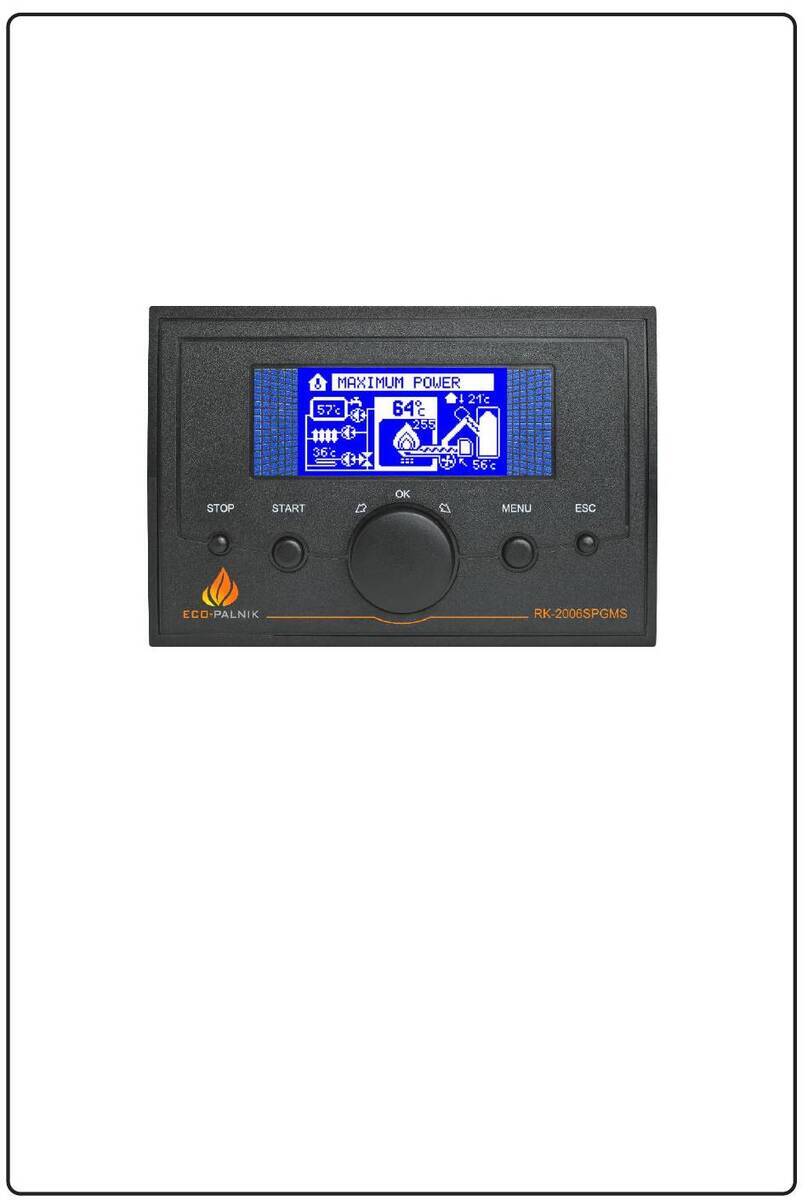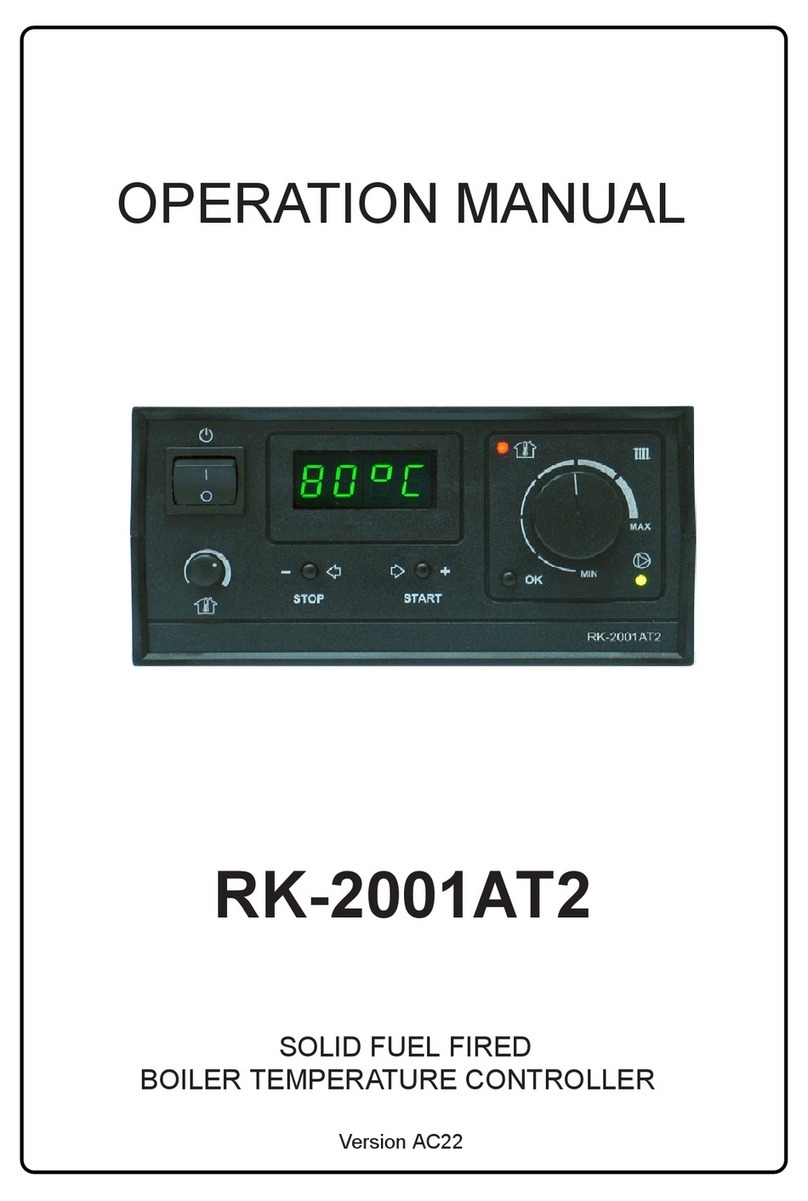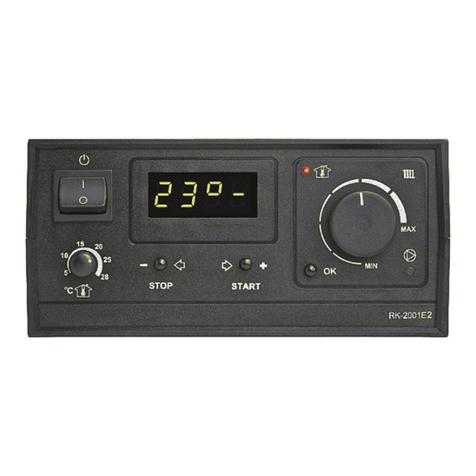5
Table 1. Service parameter's list
Disp. Parameter Min Max Step Factory
default
Π100 Fan max work power or max power when Πr 0-10. 50 100 10% 100
n 40 Minimum fan power. 20 40 10% 40
Πh 2 Fan speed decrease coefficient. 2 10 1 2
Πr 1 Automatic fan speed control and time of fan start. --, 0 10 1 1
Πn 5 Fan work time. --, 5 60 1s 5
Πu 6 Fan pause time. 1 99 1min 6
P 42 Central heating pump launch temperature. 30 70 1ºC 42
Ph 2 Central heating pump hysteresis. 1 10 1ºC 2
Pc 2 The work mode and pause time of CH pump. --, 1 99, F 1min 2
L 40 Minimum boiler temperature. 30 65 1ºC 40
H 85 Maximum boiler temperature. 80 90 1ºC 85
h 2 Boiler temperature hysteresis. 1 10 1ºC 2
A 99 Boiler overheating temperature. 90 99 1ºC 99
Fd60 Fuel shortage testing time with burning. --, 1 99, 4h 1min 60
Fb30 Fuel shortage testing time in WORK mode and
burning out. --, 1 99, 4h 1min 30
Ar 0
Work mode of extra output:
0– output turning on extra boiler,
1– alarm output,
2– output controlling mixing valve,
3– output controlling emergency cooling system,
4– output controlling extra devices turning on during
work of blow-in fan.
0 4 1 0
Prod Return to factory defaults after pressing OK
outP Central heating pump testing, press OK - launch outP out1
outΠ Fan output testing, press OK - launch outΠ out2
outr Additional output testing, press OK - launch outr out3
End Exit the service mode after pressing OK
In the table above, the first column represents example display indications, in the next
columns there are: parameter description, minimal amount, maximum amount allowed
to set, step of the parameter during the setup, factory defaults, to which you can return
by choosing [Prod] option.
4.1. Pressure fan work parameters.
Fan power [Π100] – this value defines power of the fan. When „Πr”parameter is set to
„0-10” this is the maximum power of the fanwhich can be achieved during automatic
fan control.
Minimum fan power [n 40] – lowest fan power which can be used when automatic
fan speed control is on and when fan speed is gradually increased during boiler start.
Fan speed decrease coefficient [Πh 2] – this parameter influences the way fan
speed is reduced when boiler tremperature is approaching its desired value. E.g.
setting this parameter to 2 means that when the controller is in WORK mode and































